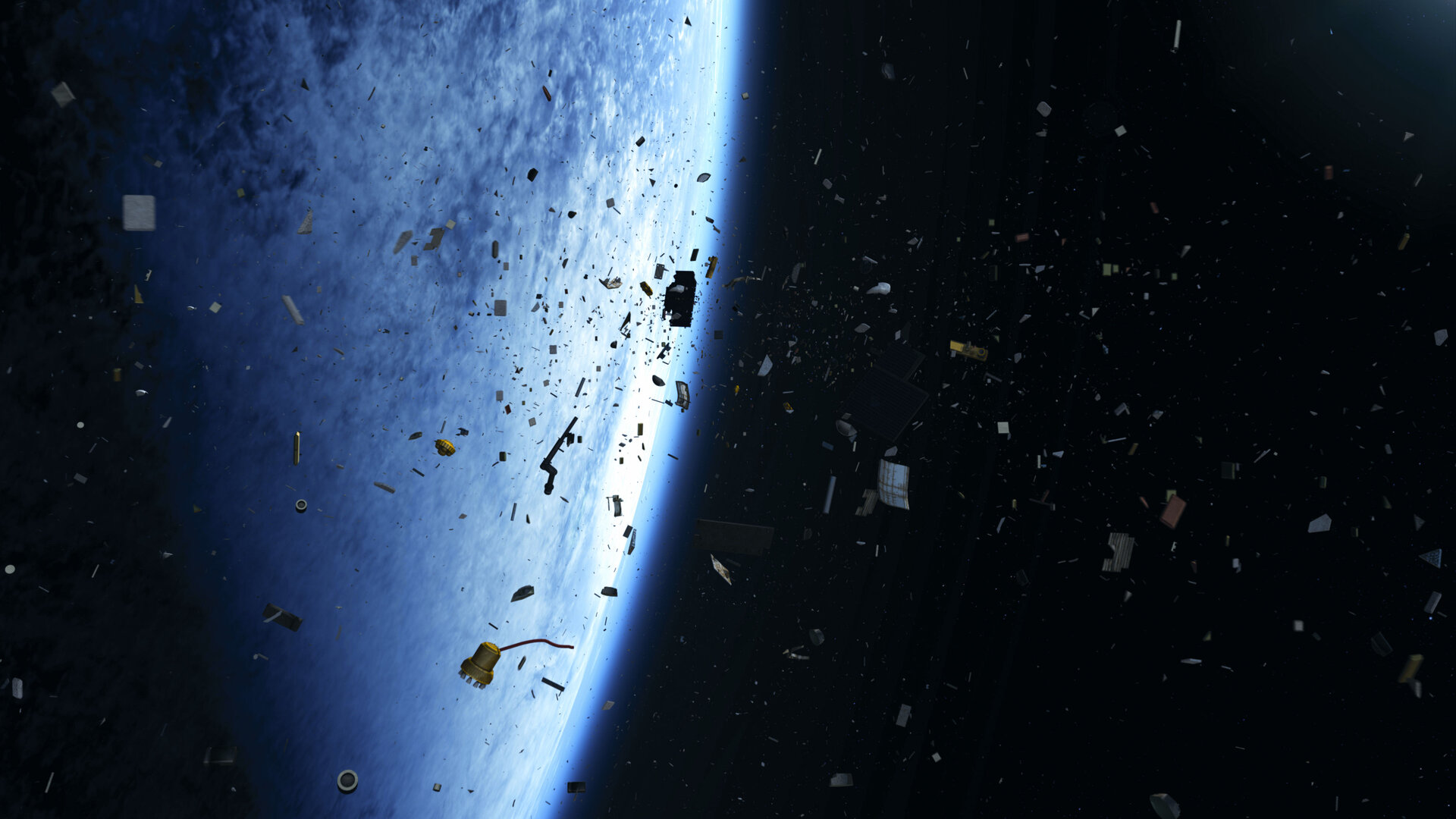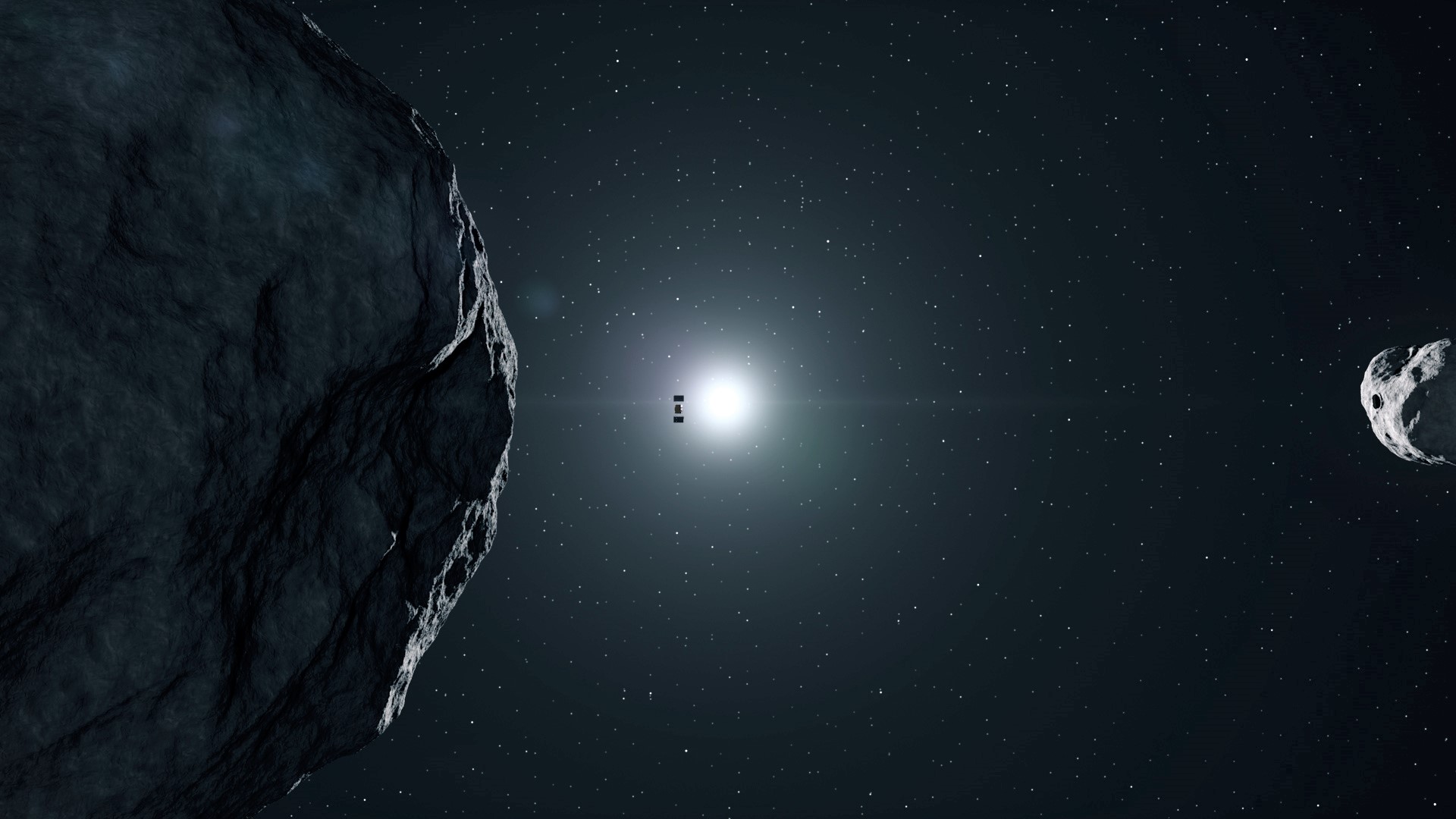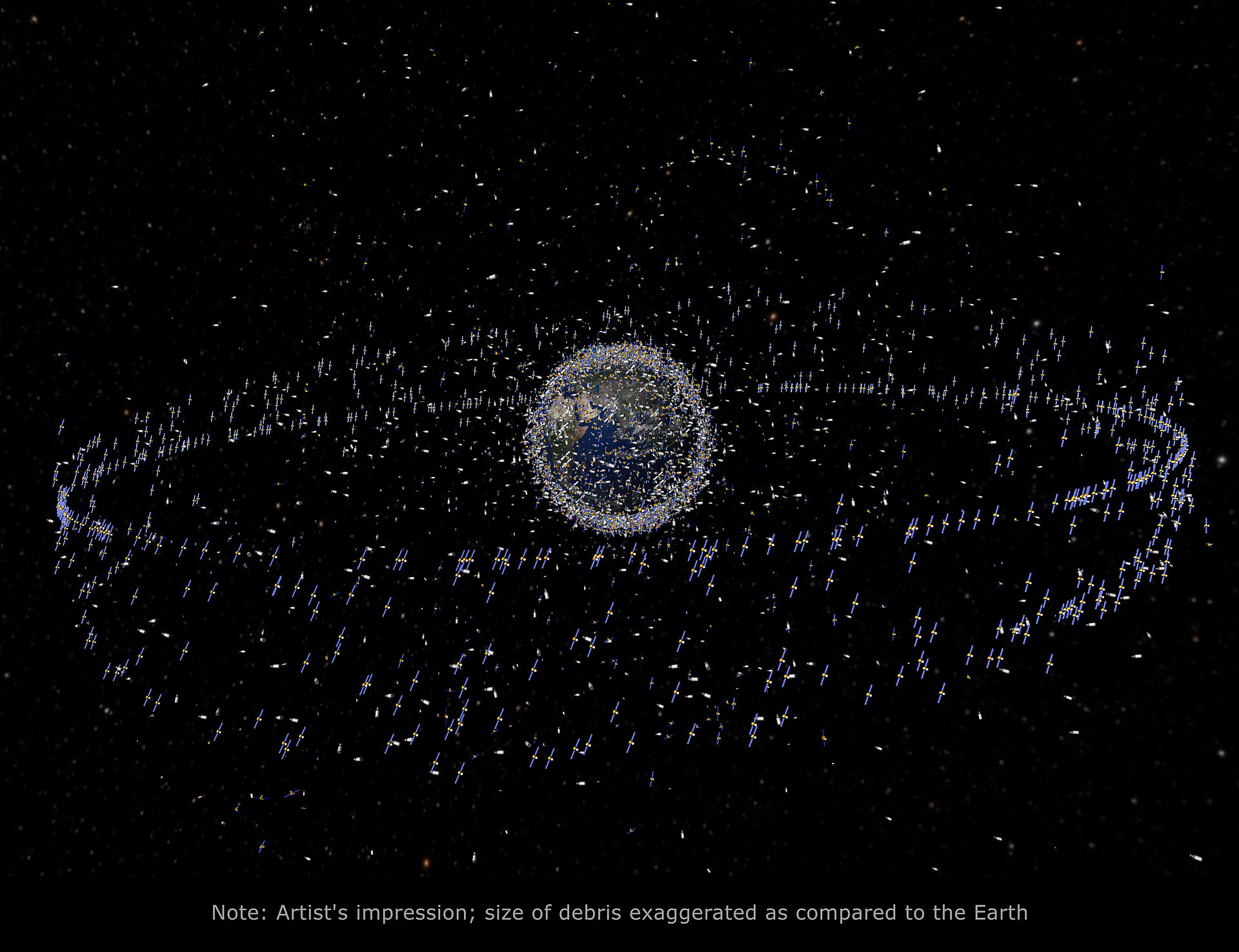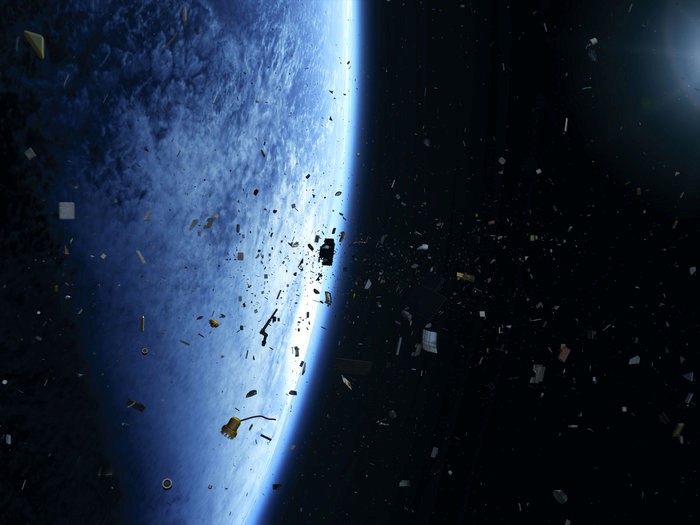Space is infinite. So how can space debris be a problem then? But it is. The reason for this is that unlike space as a whole, the space around the Earth is limited. And it is getting more and more cluttered. In addition to a rapidly growing number of functioning satellites, numerous remnants of earlier missions orbit the Earth, endangering active spacecraft. What can be done to avoid adding even more of this dangerous space debris? We asked Dr Charlotte Bewick from the OHB Space Debris Center of Competence.
Dr Bewick, what exactly is space debris?
Dr Charlotte Bewick: Space debris consists of the remnants of human activity in space. Satellites become space debris as soon as they stop functioning. Another typical examples of space debris are spent rocket stages and launch adapters. But collisions in orbit are also a big problem. When satellites collide, they create veritable debris fields that then pose a danger to other spacecraft.
Why is space debris so dangerous?
First and foremost, it's because of the high speed at which the debris objects travel. We are talking about speeds in excess of 30,000 kilometres per hour. At this speed, even the smallest particles have enormous destructive power and can render active satellites useless. Even the ISS has to dodge out of the way from time to time to avoid being hit by space debris. And after a collision, the risk of further collisions increases massively – a chain reaction sets in, which is called the Kessler syndrome. If we don't do anything about it, it is very likely that at some point there will be so much debris orbiting the Earth that we will no longer be able to use certain orbits for satellite missions.
Where is space debris to be found?
Wherever humans have been active in space so far, there is space debris. In relation to Earth, there are certain orbits that are already quite contaminated today. Especially at an altitude of 700 to 800 kilometres. There is hardly any residual atmosphere there that could slow objects down. As a result, objects remain at these altitudes for hundreds, sometimes even thousands of years. At the same time, many satellites are located in this range, as these orbits are particularly suitable for Earth observation missions. Below 400 kilometres, debris objects burn up within a few years when they enter the Earth's atmosphere.
Are debris objects also dangerous for people on Earth?
It is not at all uncommon for debris to survive re-entry into the atmosphere and reach the ground. Therefore, in controlled re-entries, care is taken to ensure that the debris does not come down over populated areas. In the case of uncontrolled re-entries, there is a possibility of debris hitting populated areas, but this is extremely rare. So far, there is no known case of a human being harmed by the impact of space debris. Nevertheless, modern satellites are designed to burn up as completely as possible in the atmosphere to further minimise the risk.
What are the options for avoiding space debris?
Every satellite mission ends at some point and we have to ask ourselves from the beginning: What happens then? You can remove satellites from orbit by either designing them so that they enter the Earth's atmosphere by themselves after the end of their service and burn up, or you can perform a targeted manoeuvre that leads to a controlled re-entry. There is also the possibility of directing satellites into a graveyard orbit. In this case, they remain in space but do not pose a danger to other spacecraft. This method is mainly used for geostationary satellites, as they are so far away from Earth that re-entry into the atmosphere is not an option.
Are there standards or guidelines that regulate the mitigation of space debris?
There is ISO 24113, for example, and ESA is currently developing its own even more comprehensive regulations. For our current missions, the rules of the ISO standard are more or less our 10 commandments and define the primary requirements for avoiding space debris. One of these requirements is that satellites in low Earth orbits must have re-entered the Earth's atmosphere after 25 years at the latest. We are also currently working with ESA and other companies on the Zero Debris Charter. This is intended to define goals for the responsible and sustainable use of space for the year 2030 – with the avoidance of space debris playing a prominent role.
What is OHB doing to avoid space debris?
For several years now, OHB has had a cross-departmental working group which has been working intensively on the issue of space debris: the OHB Space Debris Centre of Competence. It is staffed by various specialists whose expertise covers all areas of space debris mitigation. The focus of their work is on ensuring that our satellites can be safely removed from orbit, burn up as completely as possible on re-entry and can be secured beforehand at the end of their active lives by means of so-called passivation. To this end, they advise our teams, for example, on the rules and regulations surrounding space debris or simulate what happens to our satellites during and after re-entry. This helps to make certain design decisions. In addition, technology studies are also being conducted on new materials to further reduce the number of components that survive re-entry. We are also researching missions to actively remove existing space debris and missions that can be used to maintain faltering satellites.
Is it realistic that there is a future in which space debris will no longer be a problem?
At OHB, we are working towards ensuring that our satellites no longer produce space debris in the near future by developing a so-called "zero-debris" satellite platform. However, to get a full grip on the problem, we would need some sort of orbital towing service to bring at least some of the debris objects already in space back to Earth. There are already many interesting studies and mission designs, but such a manoeuvre has not yet been carried out. There never was enough money to try. But now that the problem has become more acute in recent years, things are looking brighter for the future. Several consortia are working on demonstrator missions and the first of these is expected to be launched in 2026. I’m looking forward to it.






